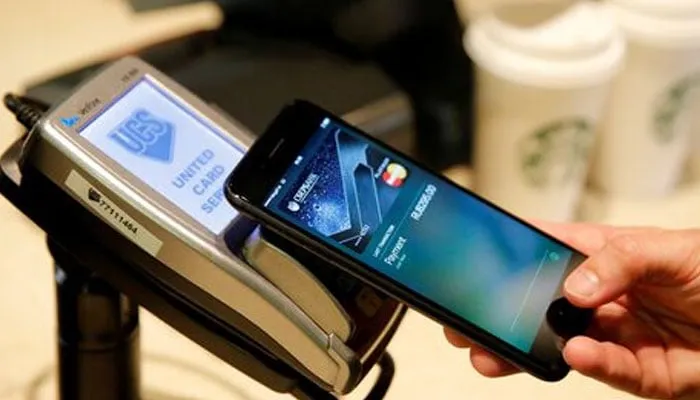Introduction
As we head into 2025, Pakistan stands at the crossroads of a digital revolution, with digital payments emerging as a key player in reshaping the nation’s financial landscape. With the increasing adoption of smartphones, expanding internet access, and government-backed initiatives, Pakistan is poised for a significant shift towards digital payment solutions. But what does this shift mean for the common man? What challenges lie ahead, and how can businesses and consumers benefit from this revolution?

In this blog, we will delve deep into the road ahead for digital payments in Pakistan, examining the trends, challenges, opportunities, and key developments shaping this landscape. From mobile wallets to digital banking, Pakistan’s journey towards a cashless economy is just beginning, and the potential for growth is immense.
Key Points Overview
- The Current State of Digital Payments in Pakistan
- Government Support and Policies for Digital Payments
- The Role of Mobile Wallets and Digital Banking
- Challenges Facing the Digital Payments Ecosystem
- The Future of Digital Payments in Pakistan: Opportunities and Trends
- How Digital Payments Will Impact Consumers and Businesses
- Conclusion
- FAQs
The Current State of Digital Payments in Pakistan
Digital payment systems in Pakistan are gradually gaining traction. While traditional methods like cash on delivery (COD) still dominate, there has been an undeniable rise in the use of mobile wallets, online banking, and QR-based payments. Several players, such as Easypaisa, JazzCash, and the SBP’s Raast payment system, are playing a pivotal role in transforming the way Pakistanis transact.
However, the adoption rate remains relatively low compared to global standards. Only a small percentage of Pakistan’s population uses digital payments regularly, and barriers such as limited access to financial infrastructure, lack of awareness, and trust issues still persist.
Government Support and Policies for Digital Payments
The Government of Pakistan recognizes the importance of digital payments in promoting financial inclusion and economic growth. In recent years, it has introduced several initiatives to support the digital payment ecosystem:
- State Bank of Pakistan’s Digital Payment Systems Policy: Aimed at expanding the adoption of digital payments, this policy encourages both banks and fintech companies to innovate and offer secure, user-friendly payment solutions.
- The Raast Payment System: A digital payment system introduced by the State Bank to facilitate real-time payments, which is expected to boost the adoption of digital transactions across the country.
- Incentives for Mobile Banking: Pakistan’s government is also incentivizing mobile banking through subsidies and tax breaks for financial institutions that promote mobile wallets and digital banking.
These steps show promise, but widespread adoption still depends on overcoming the digital divide, improving internet connectivity, and educating the public.
The Role of Mobile Wallets and Digital Banking
Mobile wallets have emerged as one of the primary enablers of digital payments in Pakistan. Apps like Easypaisa, JazzCash, and UBL’s Omni provide users with easy access to a variety of financial services, including bill payments, money transfers, and even mobile top-ups. The convenience of mobile wallets has made them particularly attractive for the tech-savvy younger generation and small businesses.
Digital banking, on the other hand, is evolving at a faster pace. With the launch of the Raast system, digital banking is poised to integrate seamlessly with mobile wallets, making digital transactions more secure and efficient. Several banks have also launched apps with full banking features, allowing customers to perform transactions from the comfort of their homes.
These services are designed to be inclusive, offering features tailored to different demographics, such as remittance services for overseas Pakistanis or micro-loans for underbanked communities.
Challenges Facing the Digital Payments Ecosystem
Despite the growth potential, Pakistan faces several challenges in fully embracing digital payments:
- Lack of Digital Literacy: A significant portion of Pakistan’s population, particularly in rural areas, is still unfamiliar with digital payment systems. This lack of awareness and education limits adoption.
- Trust Issues: Security concerns remain a major hurdle. Many consumers are hesitant to trust digital platforms with their hard-earned money due to fears of fraud and data breaches.
- Inadequate Infrastructure: Pakistan’s internet infrastructure, particularly in rural areas, remains underdeveloped, hindering seamless access to digital payment platforms.
- Regulatory Barriers: While the government is taking steps to promote digital payments, there are still regulatory gaps that make it challenging for fintech companies to operate smoothly.
- Cultural Resistance: Cash remains king in Pakistan, and many people prefer using cash for transactions due to cultural reasons, especially in smaller towns and villages.
The Future of Digital Payments in Pakistan: Opportunities and Trends
Looking ahead to 2025, the digital payments landscape in Pakistan holds several opportunities:
- Mobile Financial Services for the Unbanked: With over 100 million mobile phone users in Pakistan, there is massive potential for mobile banking and mobile wallet services to reach the unbanked population. The government’s focus on financial inclusion is expected to drive the growth of mobile financial services.
- Rise of QR Code Payments: QR code-based payments are becoming increasingly popular. They offer a convenient and secure way to pay for goods and services, and this trend is expected to continue in 2025.
- Increased E-Commerce Growth: As online shopping becomes more mainstream, digital payment solutions will play a crucial role in streamlining transactions for consumers and merchants alike.
- Cryptocurrency and Blockchain: While still in its infancy, Pakistan’s fintech sector is exploring blockchain and cryptocurrency as potential solutions for cross-border payments, remittances, and financial transparency.
- AI and Machine Learning in Fraud Prevention: With advancements in AI, digital payment platforms will become more secure, with better fraud detection systems in place to protect users’ financial information.
How Digital Payments Will Impact Consumers and Businesses
For consumers, the rise of digital payments will lead to greater convenience and security in transactions. The ability to pay bills, transfer money, or shop online with just a few taps will streamline everyday activities. Moreover, mobile payment solutions will empower the unbanked, providing them with access to financial services previously out of reach.
For businesses, adopting digital payment systems will enhance operational efficiency and customer satisfaction. Small businesses, in particular, will benefit from reduced cash handling, improved cash flow management, and access to a broader customer base.
Conclusion
As Pakistan moves into 2025, the future of digital payments looks bright. The government’s support, the growing mobile user base, and advancements in fintech will all contribute to making digital payments a norm rather than an exception. However, to realize this potential, Pakistan must address the challenges of digital literacy, trust, infrastructure, and regulatory frameworks.
With the right policies, education, and technological advancements, Pakistan could position itself as a leader in the digital payment space, driving economic growth and financial inclusion for all.
FAQs
Q1: What is the future of digital payments in Pakistan?
A1: The future looks promising, with increased government support, expanding mobile wallet usage, and the rise of QR code payments. Key trends include financial inclusion, AI-driven security, and blockchain technology.
Q2: What are the main challenges in adopting digital payments in Pakistan?
A2: The main challenges include digital literacy, security concerns, inadequate infrastructure, regulatory barriers, and cultural resistance to cashless transactions.
Q3: How is the government supporting digital payments in Pakistan?
A3: The government has introduced policies like the Raast payment system and incentives for mobile banking to encourage digital payment adoption.
Q4: Are mobile wallets safe to use in Pakistan?
A4: Yes, mobile wallets in Pakistan, like Easypaisa and JazzCash, use encryption and other security measures to protect user data. However, it’s essential to stay cautious and avoid sharing sensitive information.
Q5: What role does digital payment play in financial inclusion?
A5: Digital payments make it easier for unbanked populations to access financial services, including money transfers, savings accounts, and loans, contributing to greater financial inclusion.




